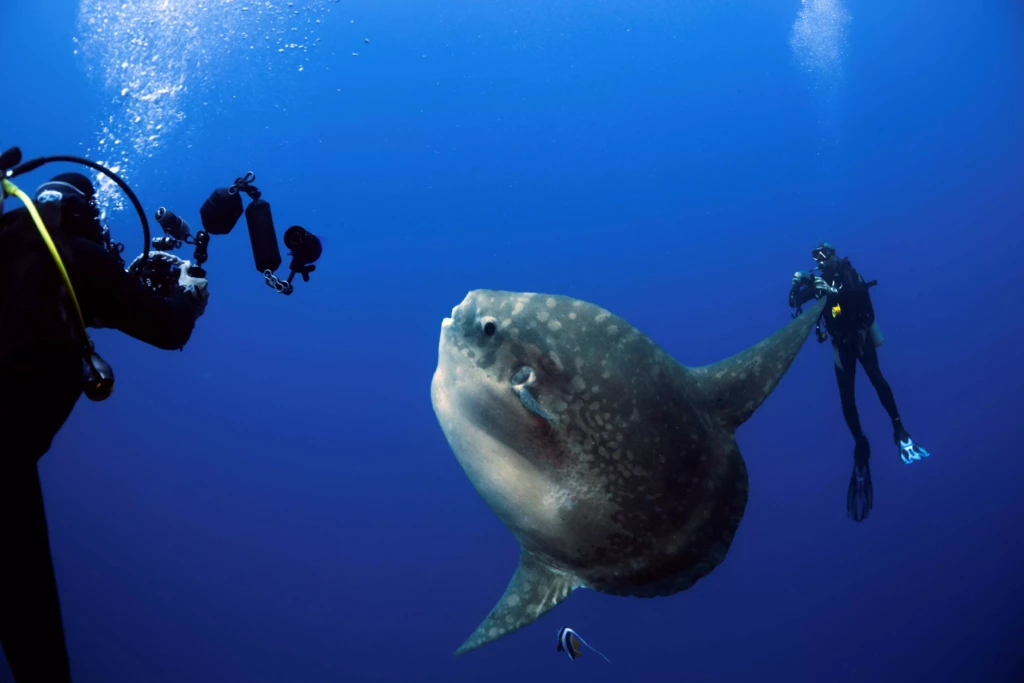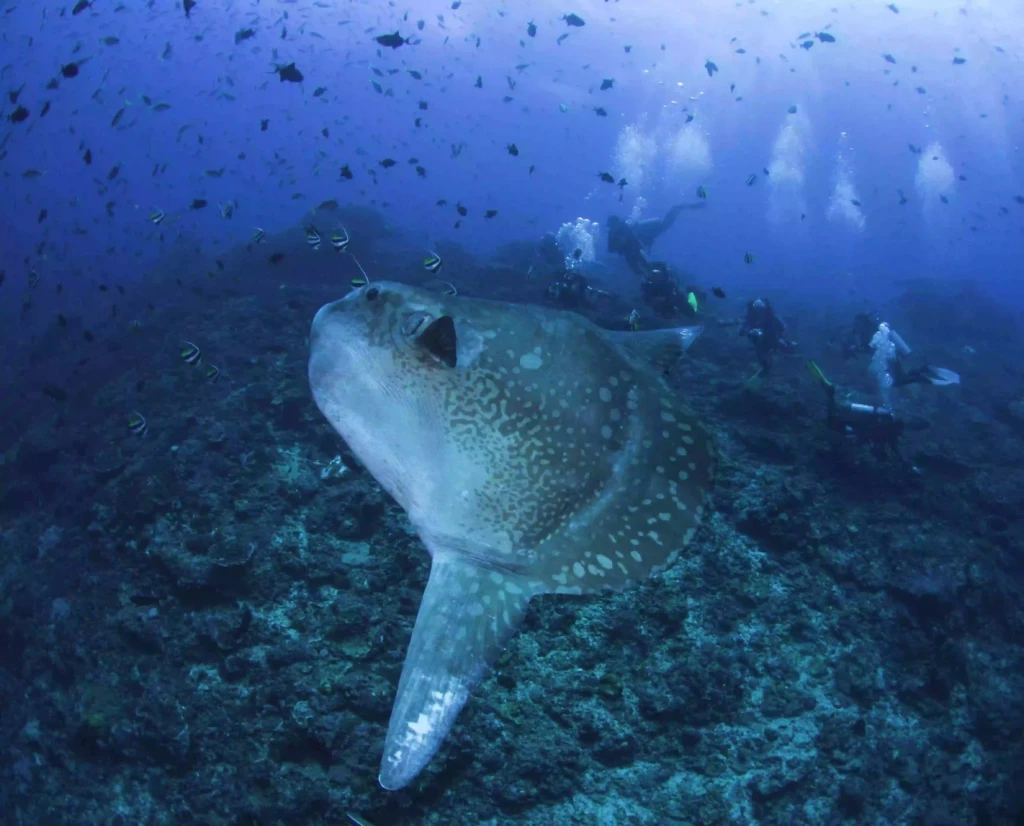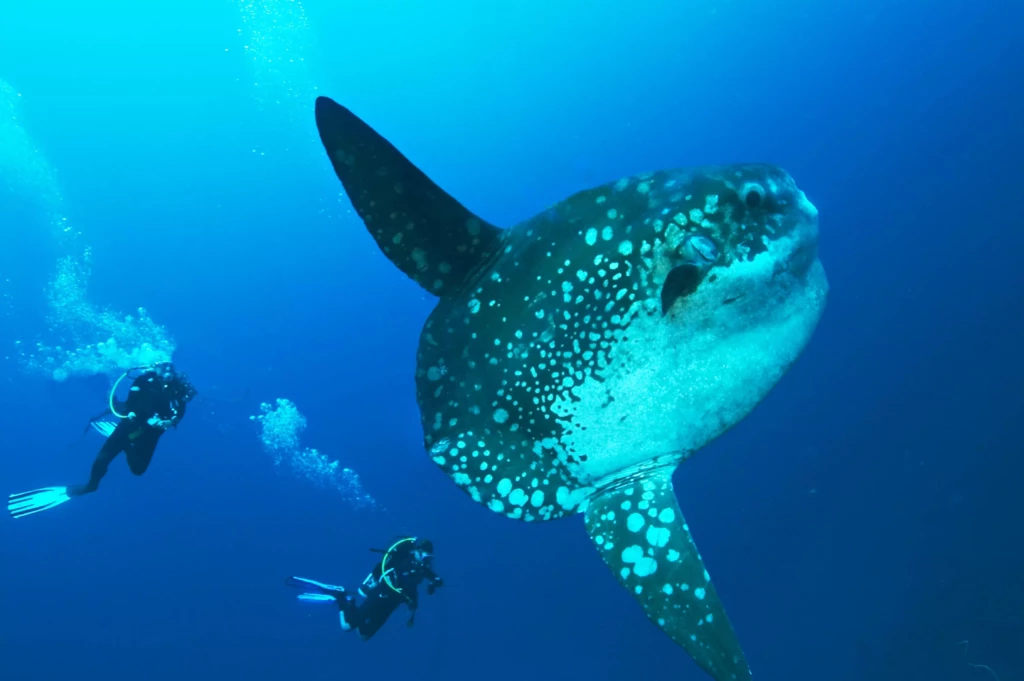Mola Mola, the fish of many names. In common English it is called “the ocean sunfish”, Germans call it “the swimming head”, other European countries name it “the moonfish” and the Chinese name is “toppled wheel fish”. Many different names but one special fish, and here are 8 facts about it.
1. Name origin of the Mola Mola
The name Mola is Latin for the large round stone, the millstone. It gives a reference to the grey, round body and rough texture of this fish.
2. World’s largest and heaviest bony fish
The largest Mola Mola ever measured was more than 3 meters across and weighed almost 2,300 kilograms. This is almost a heavy as an SUV. The average Mola Mola weighs around 1,000 kilograms, making them the heaviest bony fish.

3. Mola Molas are highly fertile
The Mola Mola can lay more eggs than any other vertebrate. In fact, they can produce up to 300,000,000 eggs at once. These eggs are very tiny and chances of survival are relatively small. Once it is fertilized they grow very fast, gaining around 1 kilogram per day until they are fully grown.

4. They love to sunbathe
Mola Molas like spend a lot of time of their day near the surface of the water, they will bathe in the sun which helps them regulate their body temperature after the deep dives in the cold water. The Molas are knows to dive as deep as 600 metres.
5. They are found throughout the world
Mola Molas live in tropical and temperate waters and can be found in the Atlantic, Pacific, Mediterranean and Indian ocean. It is most likely to see this fish in its natural environment since they are hard to keep in captivity. Luckily here in Bali there is the chance to see the Mola Mola. This most likely to happen between July and November. Check www.atlantis-bali-diving.com to see the Mola Mola dive sites Dune Atlantis offers.
6. They feed on jellyfish
The Mola Mola fish mostly feeds on jellyfish and other relative species. Besides this they also eat sea sponges, small fish, squid, crustaceans and brittle sea stars. On the other hand, Mola Molas are predated by orcas, great white sharks and seals.
7. They don’t have tails
When you have a look at a Mola Mola, it might look like this fish is missing his back fin. They do not have an normal looking tail fin like other fishes. Instead, there is long dorsal fin extending from the top and an equally long anal fin. Despite the lack of a tail they use these fins for a powerful and agile propulsion.

8. Mola Mola are harmless to humans
With their big appearance they might seem as dangerous creatures. However, the Mola Mola is harmless to humans. They move very slowly and are likely more frightened of humans than vice versa. Contrary to humans, their biggest threats are being hit by boats or being caught as bycatch in fishing gear.
Watch the video below to see how we encountered Mola mola fish during one of our divings.
OR, you may check the link below to see how Dune Atlantis’ staff and guests encounter a Mola Mola in Nusa Penida. https://www.youtube.com/watch?v=S51V5szpNws
Click here to book your day in Nusa Penida https://www.atlantis-bali-diving.com/go-diving/daily-diving-trips/day-trip-nusa-penida






